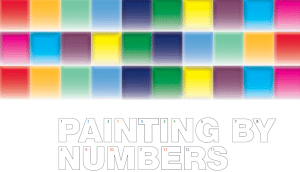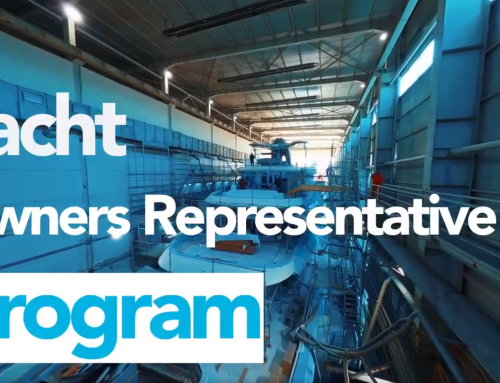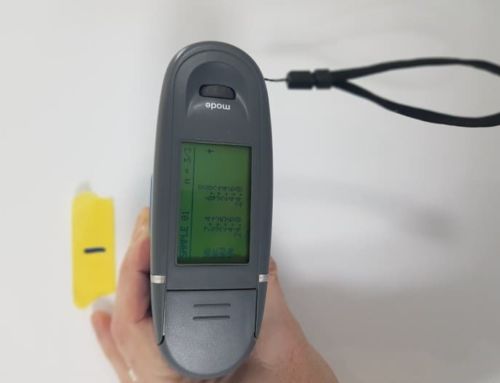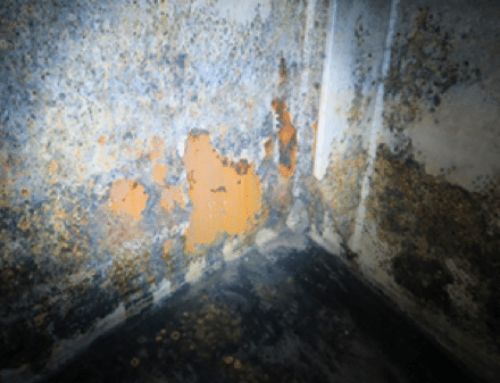Paint has traditionally been a minefield for new and refitted superyachts alike. By creating a baseline standard, the industry is making moves to take subjectivity out of the equation, but does it address the real issues?
Take subjectivity out of the equation
Published in The Superyacht Report nr. 168 March/April 2016 Painting by Numbers – SYR 168 –

‘Superyacht Quality’: What does that mean?
“When a yard says ‘superyacht quality’, what does that mean?” asks Tony Allen, partner at law firm Hill Dickinson. “In most areas it’s quite difficult to define, but in paint it’s very difficult.” It is something that the International Council of Marine Industry Associations (ICOMIA) has been keen to address, and with the formation of the Superyacht Coatings Applicators Group in 2011 ICOMIA has made headway towards producing a baseline standard to introduce ‘consistent and objective paint measurement’. ICOMIA has also developed the Technical Guideline on Minimum Acceptable Finish and Appearance for Super Yacht Gloss Coatings (originally published in 2011 and due to be revised later this year), essentially a ‘quality guideline’ that provides the benchmark for applicators, yards and owners’ teams based on target fi gures for measurements such as gloss, distinction of image (DOI), dust inclusion and other elements. Following industry expert consultation, this guideline has the intention of supporting yards and applicators within the superyacht sector “in defi ning their own quality by establishing a baseline standard”. Furthermore, ICOMIA has also launched a new Registered Marine Coatings Inspector course, delivered by the International Institute of Marine Surveyors (IIMS). In addition, it has sought to address the issue of changing paint formulations by delivering superyachtproduct-related technical data supplied by the paint manufacturers themselves to the industry at large. Alongside the ICOMIA guideline there has been a lot of talk of ISO 11347. Ken Hickling, paint industry superyacht specialist and member of the ISO TC8/SC12 Working Group 5, which has been working on the new paint application standard, is quick to point out that ISO 11347 is just one of many paint standards that already exist. “I prefer to talk about what make things good rather than what makes things bad,” he begins. “There are a lot of contributing factors that different people think are the drivers for quality, whether it’s the people doing the job, buying the right instrument, using an independent paint inspector and so on. Ultimately it boils down to two questions: what do you want and how will you know when you get it? People generally want to specify three things: that it will look good, whatever that means for them; that they will know how long it will stay looking good; and possibly that they’ve got what they paid for [in terms of the quality versus cost ratio]
ISO Standards
“The thing with ISO is that there are a lot of ISO standards for paint,” he continues, “but when people talk about the superyacht ISO standard they’re referring to 11347, which is specifically for measuring the visual appearance. Is it glossy, does it have brush marks or orange peel, is it fair? Well here’s [how to measure] the number.” Hickling likens it to determining the relative speed of yachts. “We can tell if a yacht is fast by measuring speed and representing it in a unit that we know. If we said a yacht did 37m/s, we wouldn’t know if that was fast or slow, so we use knots. This is what ISO 11347 was all about – to define what the units are. It doesn’t tell anyone what fast or slow is, because that will come down to people’s own opinion. ISO 11347 is actually several years old and has been used in a lot of people’s contracts as the method of measurement. ICOMIA took the units and parameters outlined in ISO 11347 and cherry-picked the ones that were most emotive, and said here’s a threshold level, and if a paint job is less than this it’s rubbish. If you achieve the baseline level you’ve got a fairly unattractive superyacht but it isn’t a total disaster. The idea was you set the baseline and you can compare two vendors using these parameters – they can do ICOMIA plus this or that much – and it helps understand why you might pay more for one or other contractor.” ICOMIA’s big push has been that attempt to define a baseline paint standard that both yards and applicators can refer to, and Hickling points out that it has had some utility in helping people to start talking about numbers as a starting point of reference.
Encourage the yards
Moreover, Hickling points out that Working Group 5, which considers quality in all aspects of the superyacht industry, has also turned its attention to the actual process of painting rather than just the measurement of the result. In fact, in November 2015 ISO presented the first draft of its superyacht paint process document to its international review members for consultation. They also took the opportunity at the Global Superyacht Forum 2015 to have direct industry feedback via a well-attended workshop session. As both an independent paint contractor and a member of the ICOMIA applicators group, Ritvan Metso of Thraki Yacht Painting has a particular take both on the paint process and the new standard. “I think it is a common belief that the paint industry is directed with subjectivity,” he says, “and this ICOMIA standard is a valuable effort to balance that subjectivity. But what I have noticed is that not that many yards are able to provide all the necessary logistics in terms of facilities and climatic conditions, yet the promise for ‘the best paint job’ is there. But with this in the paint specification we can come to a middle ground where we can measure paint objectively and communicate with the owner transparently for what is the minimum achievable prior to signing the contract.” Part of the problem stems from the conditions that paint teams sometimes have to work in, both in terms of environmental control and in terms of timescale. In fact, we all know an improvement in facilities is going to be a big plus. “It’s a painful and complicated issue, especially in the large-yacht sector,” Metso says. “I think we all, as an industry, have to encourage yards to invest in better conditions, and this would give much higher quality and quicker deliveries due to fewer paint issues during the outfitting process, and that would automatically mean happier owners. Beyond that,” Metso explains, “timescale is an issue because you’re talking about chemistry. We all know you can apply a second coat of fi ller the next day if you have the right ambient conditions, but we all know that the fairing compound needs to cure for a good while. So the quickest finishing of a paint job is also the most vulnerable in terms of curing times, and we see a number of new builds with fairing problems that are not necessarily down to the applicators themselves but due to the combination of ambient conditions and time pressures.”
Building excellent facilities
For Alberto Amico, chairman of the Amico & Co yard in Italy, developing appropriate facilities for painting has been a prime target, and he is quick to point out that having the right facilities can in fact lower the cost of paint jobs for clients. “All of our sheds and covered dry docks are fitted with heating, ventilation, air filtration and humidity control, providing proper application conditions,” he explains. “Comparatively, custom building a tent costs two or three times as much, and on top of that you still have to fit all the technical systems to get the optimum conditions. If you have to do that for each paint job it adds a lot of money.” The issue of climatic conditions harks back to what has traditionally been the minefi eld of litigation that can be created when a paint job goes wrong or when an owner’s expectations aren’t met. “As lawyers, it is in the nature of paint that you haven’t just got one target,” says Allen. “While the owner may be in contract with the yard, behind the yard there’s an applicator – often a subcontractor – and then there’s both the paint supplier and the paint manufacturer. This can lead to four- or fiveway arbitration or litigation, which can be very frustrating and very costly. It’s not very healthy for the industry when owners find that their ‘pleasurable’ spend of cash ends up just like their business disputes.”




